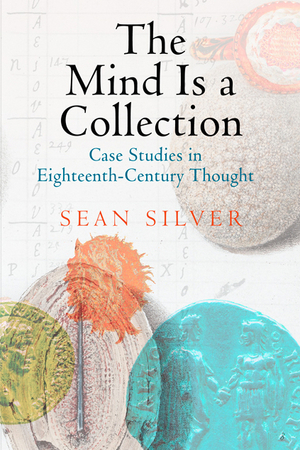4a. Willis's Brain
Object: Copperplate engraving
Materials: Ink on Paper
(c) Photo by Curator, from The Remaining Medical Works of Thomas Willis (London, 1679).
Location in MIAC: DESIGN
Thomas Willis's anatomy of the brain made space for an amphitheater for the soul.
No-one in seventeenth-century Europe knew the slippery wet-ware of the brain better than Thomas Willis. Willis pioneered the difficult surgical techniques making it possible to lay aside the lobes of the brain and penetrate to its delicate, ringlike vascular core; he was the first to penetrate to the oxygen-rich ring at the center of the brain, identifying the structure that still bears his name: the "Ring of Willis." Engravings like this one, produced with the assistance of architect Christopher Wren, were the first to make clear the brain’s precise design.
But despite the mess of fat and nerves he painstakingly laid open to the eye, Willis remained wedded to a container theory of mentation. Indeed, despite being the first neurosurgeon, and perhaps the first neuroscientist, his neurophysiology of thought risks some curious claims. Embedded in the brain, he surmised, is a “callous body” like a “white Wall,” seated within the ring of vessels laid open to the eye. “Sent or intromitted by the Passages of the Nerves,” Willis supposed, are the “Images or Pictures of all sensible things.” It is as though the optic nerves from retina to ventral cortex carried perfect images, fibre-optic-like, to cast them upon a cartilaginous membrane. This specially textured reception surface, receiving impressions from without, produces “Perception[s],” that is, “Imagination[s] of the thing felt.” Willis, in his own poetic turn of phrase, calls this interior space the “Chamber of the Soul, glased with dioptric Looking-Glasses.”
Seated within the brain, like an operator within a complicated machine, is a witness to the picture show—the observer unmoved within the darkness. This is among the first modern statements of what has come to be called the "homunculus argument," the claim that there is a little, person-like entity seated somewhere in the brain, witnessing sensory inputs and making judgments about actions. The basic scheme, despite being repeatedly philosophically rejected right from the start, nevertheless continually haunts accounts of cognition. Indeed, it is hard to know how to speak about thought without slipping into our inherited vocabulary-- one that leans on a distinction between thought and thinker, perception and perceiver. Willis's neurophysiology hypothesizes exactly a critical boundary-- the "white Wall" of the "callous body"-- in order to ground just such a way of speaking about things.
In part because it offered a neurological basis for something already sensed to be true, this model would turn up repeatedly in treatises on mentation. Among others', strikingly similar models turn up in the remarks of two of Willis's students, John Locke and Robert Hooke. Historically speaking, then, it is partly through this route, through Willis's neurophysiological fancies, that the age inherited a chamber or container theory of mind.
Notes: A number of very good studies of Willis exist, among which are Adrian Johns, The Practice and Representation of Reading in England (2007), 144-53; Alison Muri, The Enlightenment Cyborg (Toronto, 2007), 117-64; Jess Keiser, "Nervous Figures," ELH (forthcoming 2016). See also Setti S. Rengachary (et al.), "The Legendary Contributions of... Willis," in Journal of Neurosurgery (2008); Cagatay Uston, "Dr. Thomas Willis's Famous Eponym," Journal of the History of the Neurosciences (2005); and Luis-Alfonso Arraez-Aybar, "Thomas Willis," Journal of Anatomy (2015). Willis's remarks appear in The Souls of Brutes, 24-5. On the homunculus argument, which he calls the "Cartesian theatre" (but which could more poetically be called the "white Wall of Willis") see Daniel Dennett, Consciousness Explained (1991).
